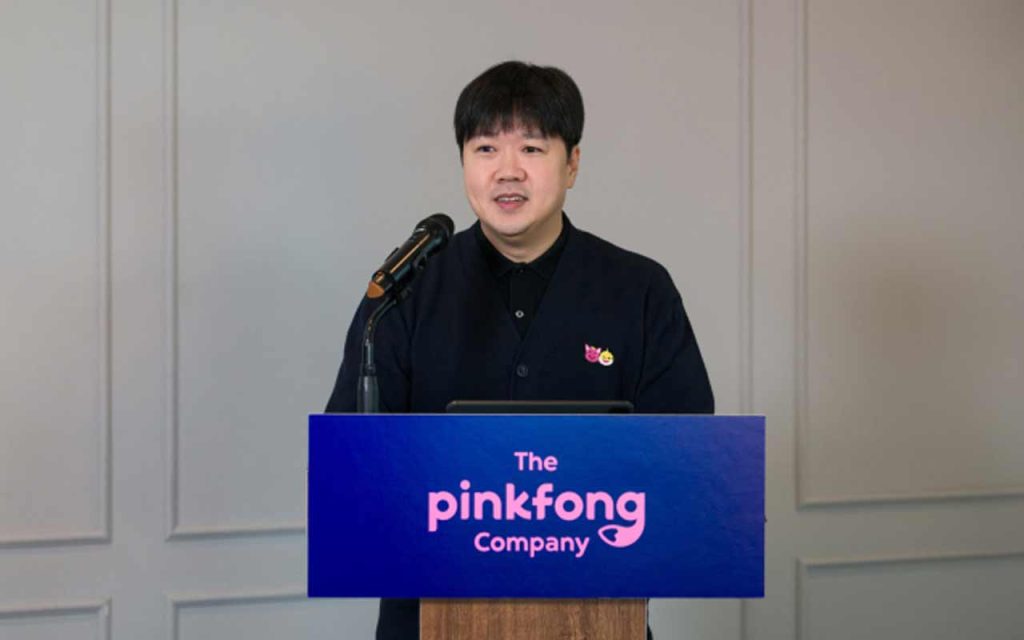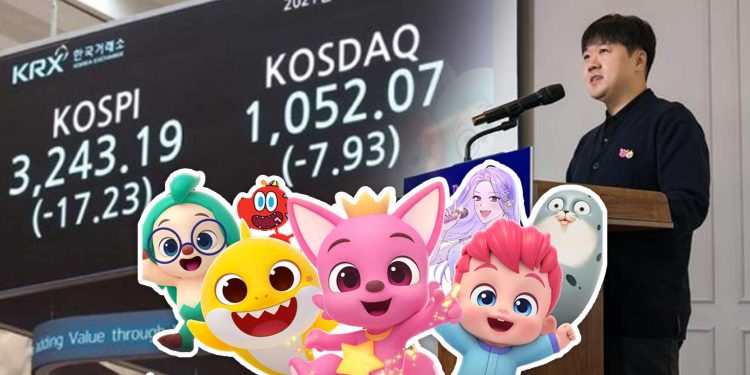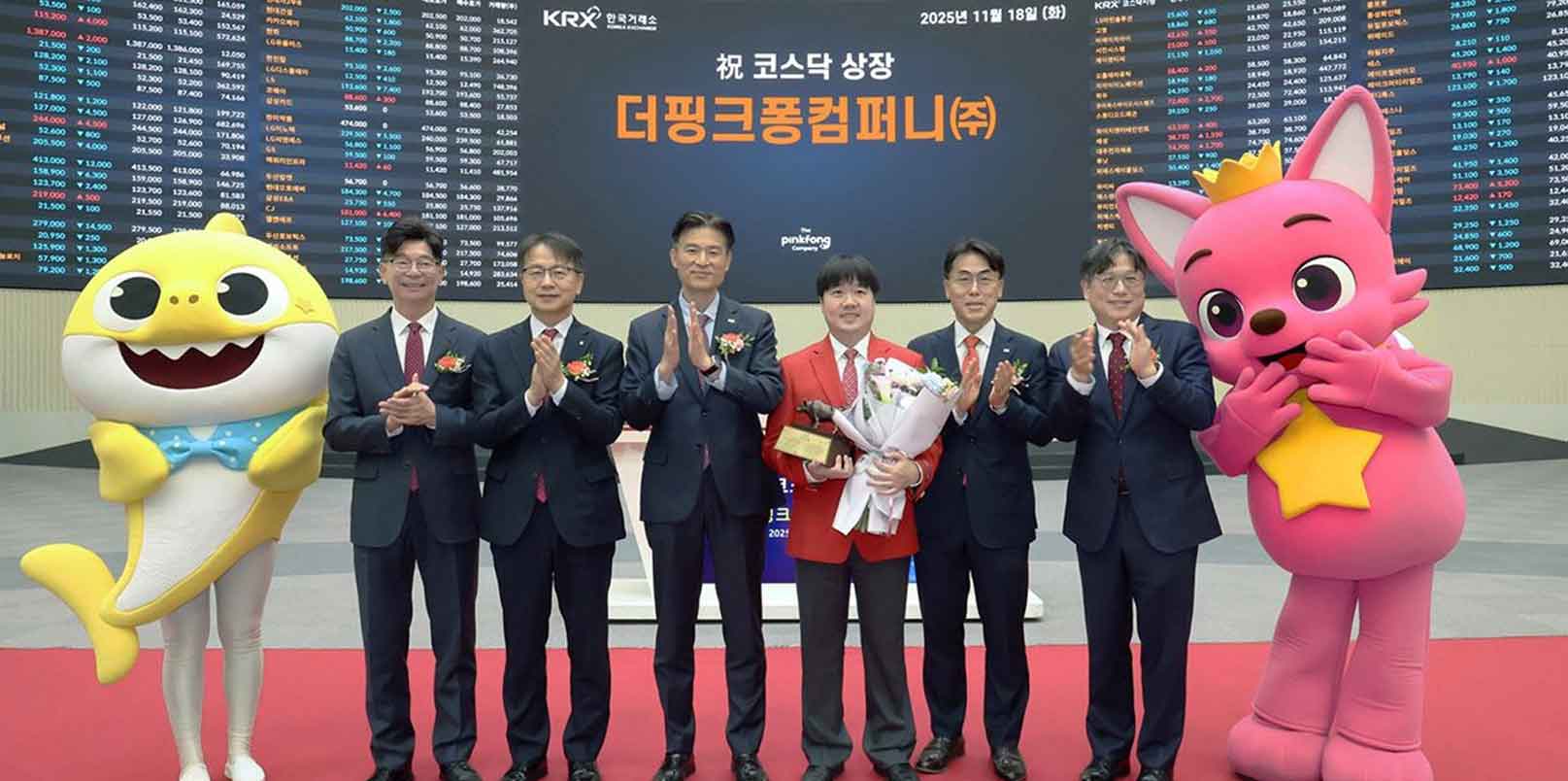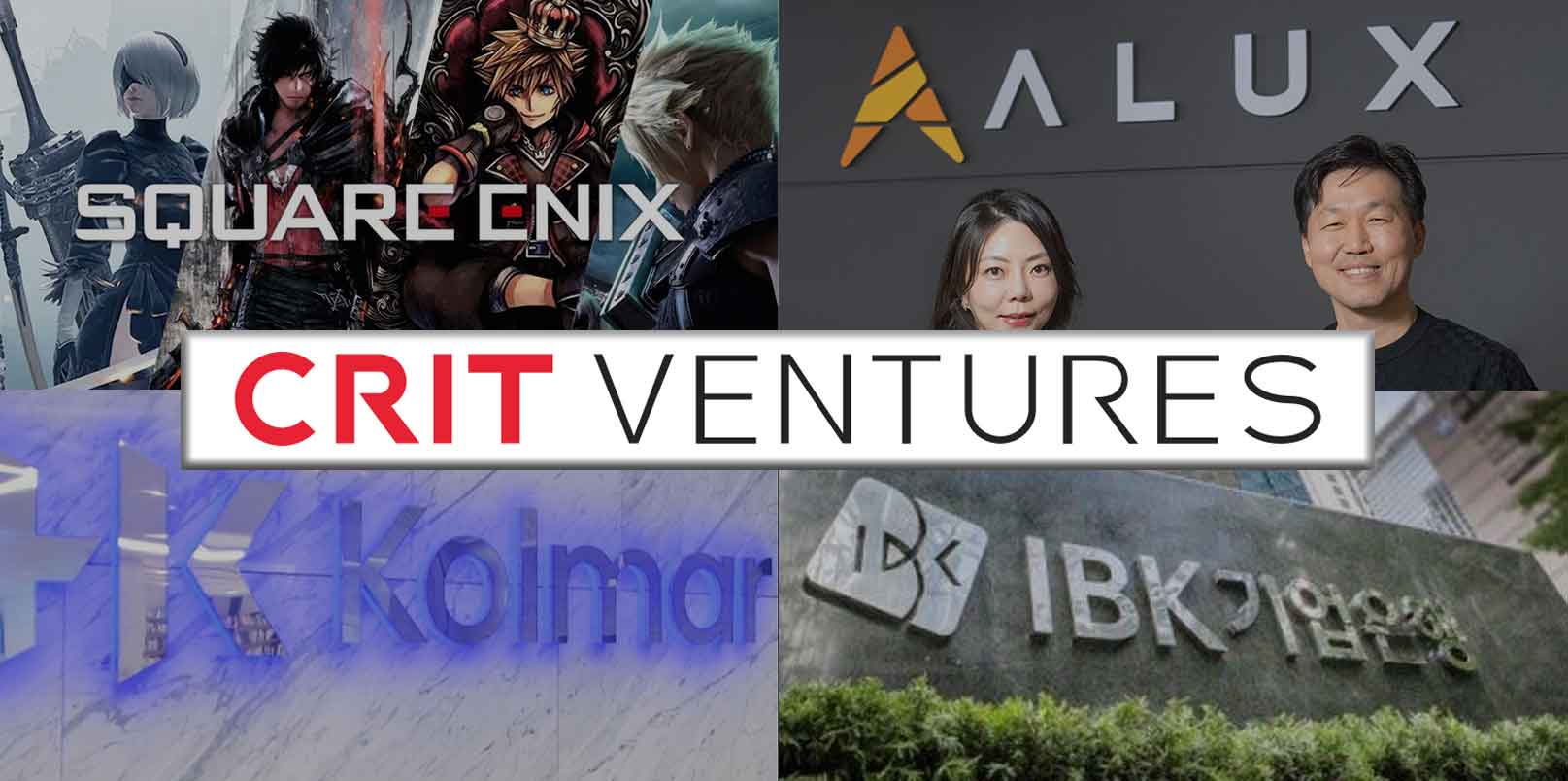The creator behind Baby Shark, The Pinkfong Company, is further preparing to make its KOSDAQ IPO. But beyond its market debut, The Pinkfong Company’s KOSDAQ listing has now reflected Korea’s transition from traditional content exports to a data- and AI-driven IP economy. It signals how the country’s creative sector is evolving into a scalable tech industry built on content, localization, and innovation efficiency.
The Pinkfong Company Hold Press Conference for KOSDAQ IPO
On November 3, Seoul-based The Pinkfong Company — best known globally for Baby Shark and Pinkfong IPs — held an IPO press conference at the CCMM Building in Yeouido, outlining its growth strategy as a “next-generation family entertainment tech company.”
Founded in 2010, the company manages a growing IP portfolio including Pinkfong, Baby Shark, Hogi, Bebefinn, and Sealook. Its flagship video, Pinkfong Baby Shark Dance, has ranked No.1 in global YouTube views for 60 consecutive months, surpassing 190 billion total views and 280 million subscribers across channels.
The company plans to issue 2 million new shares, with an indicative price range of KRW 32,000–38,000. This values the IPO at KRW 64–76 billion (USD 46–55 million) and the post-listing market capitalization between KRW 459.2–545.3 billion (USD 333–395 million).
Mirae Asset Securities and Samsung Securities are joint lead underwriters, with general subscription set for November 6–7.
AI and Data: The Core of Pinkfong’s IP Evolution
At the press conference, CEO Kim Min-seok emphasized that Pinkfong is no longer just an animation studio but a technology-based content company integrating AI, data analytics, and localization throughout production and distribution.
The Pinkfong Company CEO said,
“We are evolving into a next-generation family entertainment company that combines AI and data with global IP expertise. If entertainment companies create stories and game developers sustain platforms, we merge both to design sustainable global content.”
The company has developed an AI-powered content development model that uses accumulated performance data from past IPs to assess the success potential of new projects at the concept stage.
Evidence of this system’s efficiency can be seen in Bebefinn’s rise — it reached 10 million YouTube subscribers in just 14 months, compared to Pinkfong’s 53-month trajectory.
Pinkfong also unveiled “OneVoice,” an in-house AI dubbing and translation solution designed to accelerate localization and improve production quality across 25 languages and 244 markets.
Expanding the IP Universe: From Baby Shark to Kikipuppup
Funds raised through the IPO will support new IP development, production process enhancement, premium animation, and global location-based entertainment (LBE) expansion.
Its upcoming franchise, Kikipuppup, co-produced with Japan’s TBS, is set for TV broadcast in 2026 following its YouTube pre-release. With this model, the company plans to shorten new IP release cycles from two to three years to just one — a pace rarely seen in the global animation sector.
Pinkfong’s follow-up IPs such as Bebefinn and Sealook have also demonstrated scalability. Bebefinn ranked No.1 on Netflix Kids in 11 countries, including the United States, showing how data-driven localization translates into global commercial results.
Beyond Baby Shark and Entertainment: Pinkfong is Redefining IP Economics
The Pinkfong Company CEO Kim Min-seok also addressed investor concerns over IP dependency and market competition amid the rise of AI-generated content:
“We’ve verified through past experiments that mass-producing low-quality videos doesn’t work. Even with AI flooding the market, audiences can recognize quality — and algorithms will reflect that.
We also recover production costs through our own channels even if a series doesn’t become a major hit. Licensing and merchandise revenue then become additional profit, not the foundation.”
The CEO then added that Pinkfong aims to create an IP business model independent of unpredictable viral success — one where content itself generates recurring revenue through exposure, streaming, and reusability.

From Baby Shark to KOSDAQ IPO: Pinkfong Marks Korea’s Turning Point in Creative-Tech
Pinkfong’s KOSDAQ debut marks a turning point for Korea’s creative-tech ecosystem, showing how intellectual property is evolving into a venture-grade asset class. The company’s model aligns with a broader national trend — turning content businesses into data-driven, tech-powered enterprises capable of scaling globally without relying on single-hit successes.
By integrating AI-driven production, localization, and monetization systems, Pinkfong demonstrates how creative startups can build sustainable IP portfolios comparable to software or SaaS companies. This approach mirrors Korea’s strategic push to position creative content as a core pillar of the innovation economy, alongside semiconductors and mobility.
Industry analysts note that Pinkfong’s 20% operating profit margin and 76% overseas sales ratio showcase a globally viable business structure — one that investors and policymakers could reference when nurturing similar IP-centric startups.
The Future of Korea’s AI-Driven Creative Industry
The Pinkfong Company’s evolution — from children’s songs to a global AI-integrated entertainment enterprise — encapsulates Korea’s larger creative economy shift. As content creation converges with machine learning, data analytics, and localization automation, Korea is building not just viral IPs, but a repeatable framework for global creative innovation.
At the end of the day, The Pinkfong Company’s KOSDAQ journey illustrates that in the AI era, intellectual property itself can function as a scalable technology platform — one capable of generating continuous growth long after the initial hit fades.
– Stay Ahead in Korea’s Startup Scene –
Get real-time insights, funding updates, and policy shifts shaping Korea’s innovation ecosystem.
➡️ Follow KoreaTechDesk on LinkedIn, X (Twitter), Threads, Bluesky, Telegram, Facebook, and WhatsApp Channel.






